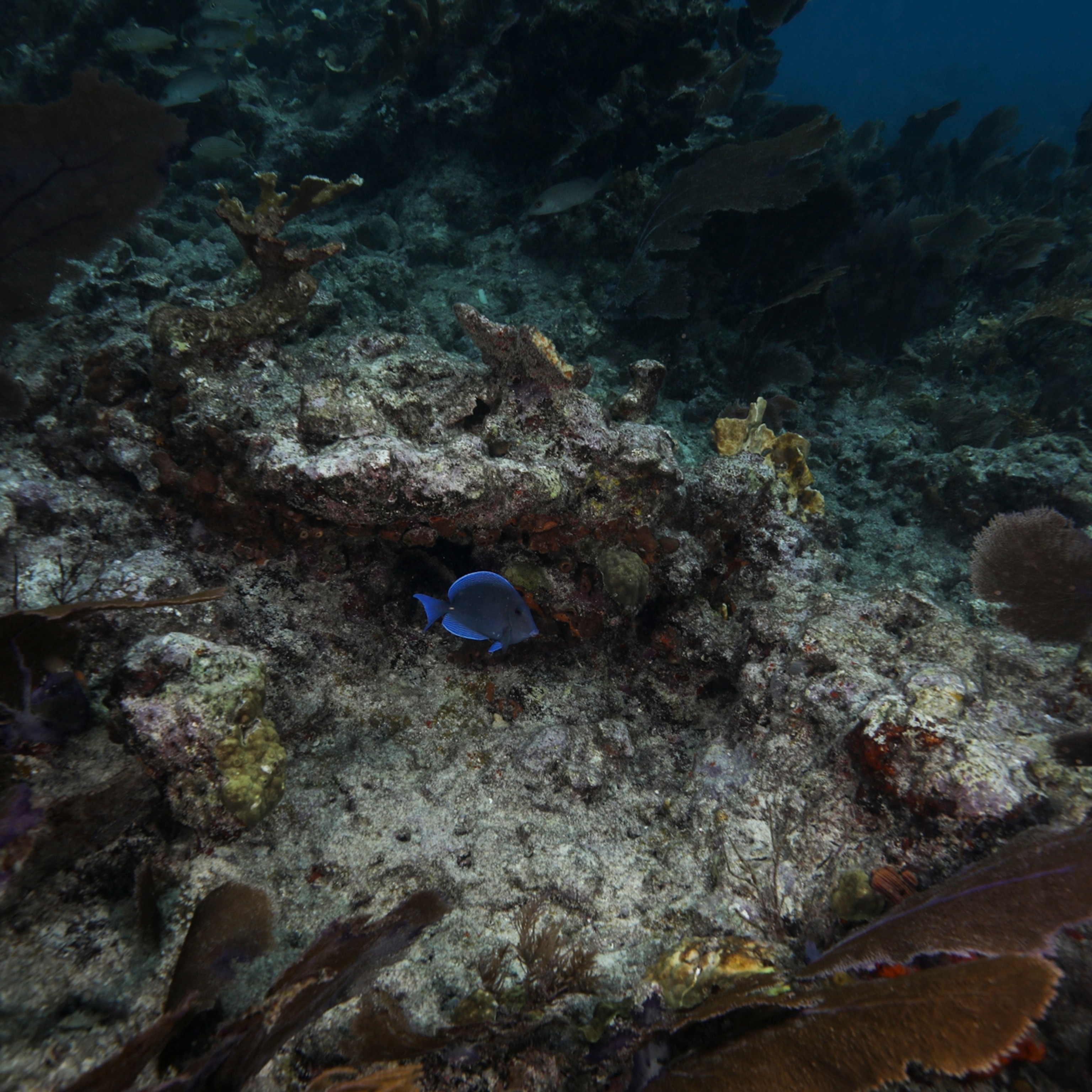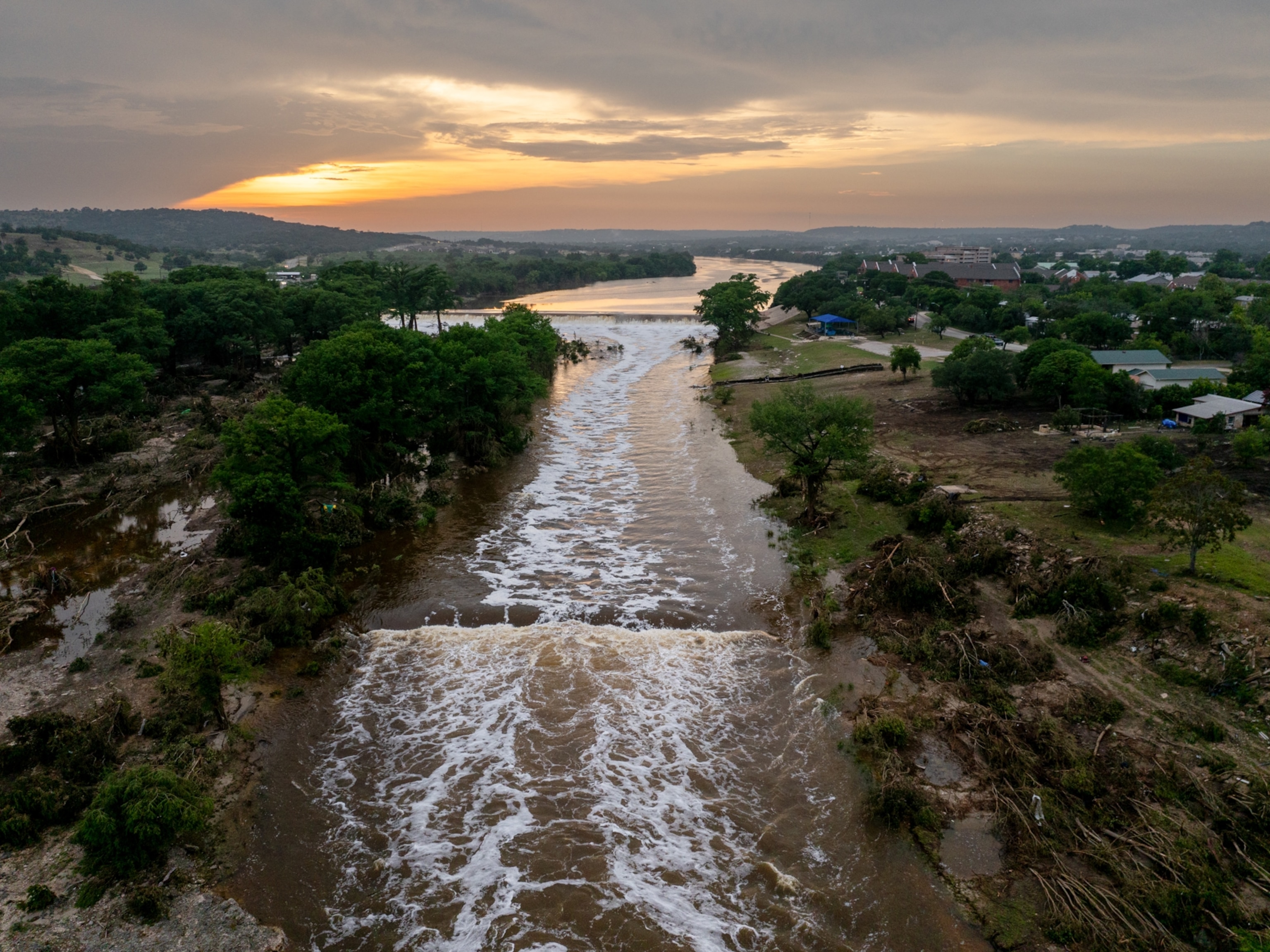Within Decades, Floods May Render Many Islands Uninhabitable
Wave-induced floods—abetted by rising seas—could ruin the water supplies of thousands of islands, a new study claims.
For the Marshall Islands, climate change isn't some distant, future danger: It is already wreaking havoc across the Pacific country's more than 1,100 low-lying atolls.
Now, a new study claims that climate change may soon deal the country's water supplies a death blow. As sea levels rise around the islands, bigger waves will flood farther inland than ever before. If enough of these waves hit in succession, flooded saltwater will irreparably taint the islands' freshwater supplies.
Under reference scenarios for sea-level rise used by the U.S. Department of Defense, one of the Marshall Islands' atolls—and potentially thousands of other islands—could become uninhabitable when sea levels rise by 16 inches, which could happen as soon as midcentury.
“We hope the managers and governments take these forecasts into account to help more effectively plan restoration, mitigation, or relocation in a manner that saves dollars and lives,” says U.S. Geological Survey scientist Curt Storlazzi, the study's lead author.
Outside researchers say that the study, published on Wednesday in Science Advances, is best viewed as a worst-case scenario. That said, researchers praised the study for its modeling—and the grave warning it gives.
“This study shows just how significant wave action is to the effective inundation of coastal locations,” says Kristina Dahl, a senior climate scientist with the Union of Concerned Scientists who has researched climate change's effects on recurrent flooding in cities. “With sea-level rise alone, the island studied here would be habitable through late century. But with wave action added in, the time frame for habitability is significantly shortened.” (See what the world would look like if all the ice melted.)
Modeling the Future
As humans tinker with Earth's climate on a global scale, sea levels are rising, a function of seawater expanding as it warms and the melting of ice in Greenland and Antarctica. But increasingly, research shows that well before the seas permanently claim a given area, floods will make the area uninhabitable.
“Most sea-level rise studies simply look at what the level of high tide will be in the future and compare it to the elevation of the land. While a valuable first pass, such studies don't model processes such as king tides and waves, which will be amplified by higher sea levels,” says Dahl. (Waves and king tides also pose a threat to Florida—here's why.)
This is of particular concern for the Marshall Islands and other low-lying island nations that are only feet above sea level. Increasingly, strong storms and high tides threaten the Marshall Islands, destroying homes and washing grave sites out to sea. What's more, recent droughts have already stressed the Marshallese water supply.
If climate change is already this disruptive, what does the future hold? On the direction of the U.S. Department of Defense, which maintains a military base in the Marshall Islands, Storlazzi's team was tasked with modeling how wave-driven flooding would impact Roi-Namur, an island within Kwajalein Atoll.
Storlazzi was given three scenarios to model: about 1.6 feet of sea-level rise by 2100, 3.3 feet of sea-level rise, and a full 6.6 feet of sea-level rise. His team then modeled Earth's climate, the behavior of wave-driven floods, and underground aquifers' responses to encroaching saltwater.
Roi-Namur let the researchers check their work. In March 2014, a massive wave flooded parts of the island, cutting inland and swamping coastal roads. “It was impressive—the fact that you could have such an impact on a beautiful, sunny day—but that is the concern,” says Storlazzi. “Most of these overwash events occur during local 'sunny day' conditions due to waves generated by storms hundreds to thousands of kilometers away.”
To the team's surprise, its calibrated models predicted that wave-driven floods would hit annually once sea levels rise 16 inches, making Roi-Namur's fresh water too salty to drink. For many of the atolls, groundwater aquifers are the primary source of water; if the water is too salty to drink, the islands become uninhabitable.
“Although we knew the tipping points would be in decades and not centuries, we were not sure how soon they would be predicted to occur,” says Storlazzi.
Other Factors at Play?
The study's short timeline, however, depends on the amount of sea-level rise—and some outside researchers urge caution in interpreting the study's scenarios.
“Treating the islands as inert, unresponsive landforms fails to account for the frequently observed response to extreme water levels, being the deposition of reef-derived sediment onto the island surface,” says University of Auckland geologist Murray Ford, who studies coastlines' responses to sea-level rise. “The results therefore represent a worst-case scenario in which island shorelines do not behave naturally.”
“These scenarios weren’t designed to be probabilistic, but to span a range of possibilities,” adds Rutgers University climate scientist Bob Kopp, an expert on sea-level rise modeling, by email. “Their RCP 8.5 scenarios [the two most severe] have too much sea-level rise too soon.”
Research by Kopp and others suggests that in the Marshall Islands, there's a two-thirds chance of hitting 16 inches of sea-level rise some time between 2056 to 2083, depending on global action against climate change. In contrast, the study's more severe scenarios reach 16 inches by 2045.
That said, Kopp agrees with the study's basic argument. “Some time in this century (even, I would add, under very stringent emissions reductions), it is likely that the threshold they identify with respect to salinization in the Marshall Islands will be crossed,” he said by email.








